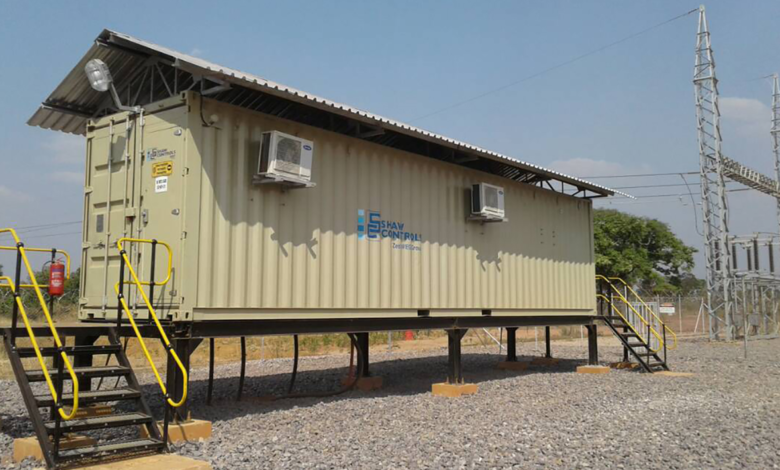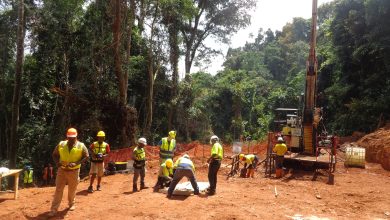
The correct selection of an MV switchgear is a key factor in a mine’s ability to meet production targets.
Imagine a copper mine in the DRC is in the throes of production, and suddenly, critical equipment stalls, and an MV switchgear failure identified as the root cause.
Inevitably, the ensuing loss of production hours would lead to irretrievable revenue loss, a fact highlighted repeatedly in this publication. Clearly, this isn’t what mine managers would be keen to face as they chase big numbers. But it is all in their hands to avert this through prudent decision-making in equipment selection.
Ostensibly, medium voltage (MV) switchgear may pale in significance when one considers they contribute less than 30 per cent of mining power capital expenditure (CAPEX). However, they could contribute to the difference between high and low revenue.
Pivotal role
MV switchgears are critical to mining operations.
Typically, underground and surface mines and mineral processing operations utilise MV and LV electric motors that drive equipment. So, where medium voltage is required, it is essential to find the most effective way of stepping down power sourced from the high voltage (HV) transmission network to medium voltage (MV) levels (usually, this ranges from 11 KV to 38 KV). That’s where MV switch gears fill the void.
The MV switchgear incorporates critical components such as circuit breakers, fuses, relays, and disconnect switches. It plays a pivotal role in controlling, protecting, and isolating electric power systems. The upshot is that it prevents faults and facilitates the efficient operation of equipment.
For this reason, sourcing suitable products for project applications is a no-brainer. This is keeping in mind that mining environments where switch gears are deployed are usually harsh and unforgiving to equipment. Therefore, it is fundamental to be well acquainted with switchgear types and specifications for respective project applications.
Harsh environments
The harsh mining environment tests the resilience of switch gears, which are most likely to be exposed to conditions like high levels of dust, pollution, and humidity (which cause corrosion). More to the point, there are electrical and mechanical constraints to consider (numerous operations, high harmonic currents, high motor staring currents, etc.). Authors, Juan Tobias and Eric Delaunay from Schneider Electric, mention this in their white paper -MV switch gears for mining power system applications: IEC vs. ANSI).1
.Insulation-type switch gears
Generally, mining-specific MV switch gears are categorised according to insulation, of which the most common are air-insulated switchgear (AIS) and gas-insulated switchgear (GIS). These offer end-users different levels of experience relating to performance, reliability, and environmental compatibility.
Air and gas are common insulating media within the switchgear enclosure, but some manufacturers use fluids and solids. Those protect energised devices from arc events.
Applications as per voltage requirements
Switchgears are used for different applications, depending on voltage requirements. These are the main MV switchboard (primary switchboard) and secondary switchboard.
- Primary switchboards
Primary switchboards, using circuit breakers, connect the HV/MW transformers and local MV generators to cable feeders. Grinding mill MV motors are connected. Smaller motors are connected using MV-fused contactors.
- Secondary switchboards
Using switches and circuit breakers, MV secondary switchboards control and protect MV/MV and MV/LV transformers that feed motor control centres via circuit breakers, MV motor control centres connect to MV transformers. They then feed the MV motors through fused contactors, soft starters, and variable speed drives (VSD).
Selection dilemma
After all is said and done, the inevitable step is product selection. This is an area where prudence is vital.
What one observes in the switchgear space is the tendency for some manufacturers to oversell their products as one-size-fits-all. But truth be told, both GIS and AIS have their pros and cons. And to be fair, there is no perfect product.
- AIS pros and cons
In terms of AIS, the following are some of the most cited advantages: they require less construction work and a low cost of installation; all equipment is within view, thus easing maintenance; and they provide ample space for erection and commissioning.
The shortcoming of AIS is that they are vulnerable to pollution, saline air, and other environmental factors; As they are in the open, they are prone to lightning strikes and require more space.
- GIS pros and cons
On the other hand, GIS offers the end-user the following cons: it occupies much less space – it can be as low as one-tenth of ordinary substations; it causes fewer fault-related outages; it can be supplied fully assembled and commissioned on site; and it has low disruptive maintenance requirements. On the other hand, their downsides include: it is expensive; dust particles and moisture can enter, resulting in flashovers; addressing a fault can be time-consuming, leading to costly downtime.
Equally significant is that the International Electrotechnical Commission (IEC) standards (IEC or ANSI) apply to MV switchgear. International Electrotechnical Commission (IEC) performance standard 62271 (design, manufacture, and testing) specifies the recommended tolerance to humidity, altitude, and temperature of enclosures. IEC standards apply in all countries except the USA and Canada, where ANSI/NEMA/IEEE/UL standards apply.
The long and short is that applications and conditions in mining projects determine what type of product to use, depending on its unique merits. Anything that claims otherwise is disputable.
Juan Tobias and Eric Delaunay – MV switchgear for mining power system applications- IEC vs ANSI Mining Power Systems Competency Centre, White Paper No 03






